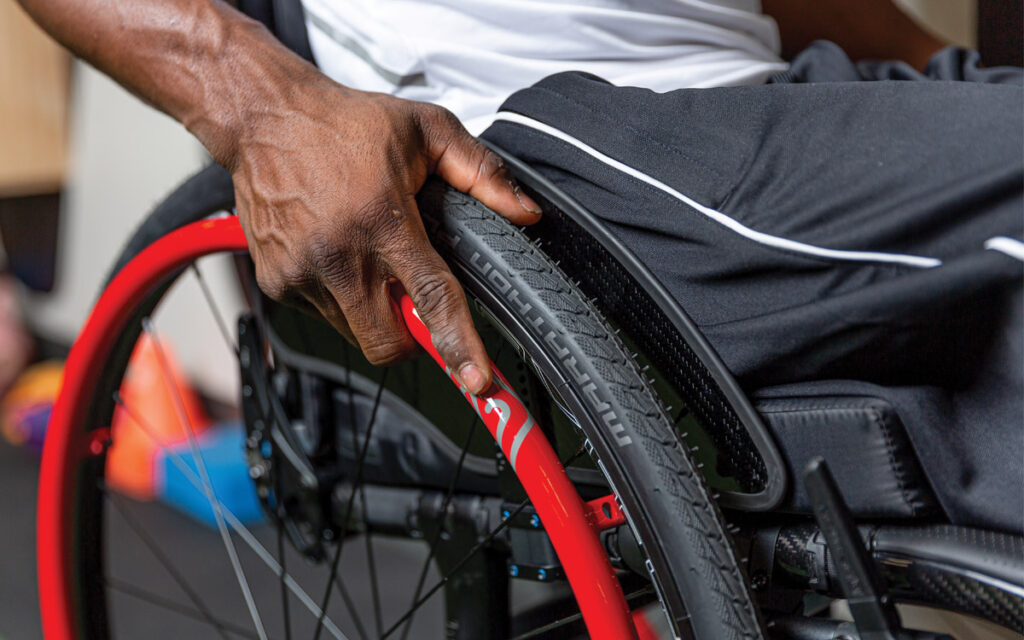
Wheelchair technology has come a long way in recent years, with modern designs focusing on enhancing comfort, speed, and ease of use. One of the most impactful innovations has been the development of lightweight wheels, which significantly improve overall wheelchair performance. Lightweight wheels can transform a standard wheelchair experience by enhancing maneuverability, reducing user fatigue, and increasing both control and responsiveness.
Enhanced Maneuverability and Control
For wheelchair users, ease of movement is crucial, especially when navigating tight spaces or moving through crowded areas. Lightweight wheels are easier to push and turn compared to traditional, heavier wheels. This ease translates to greater agility, allowing users to navigate obstacles, corners, and varying terrain types with minimal effort. Whether indoors or outdoors, lightweight wheels provide a level of precision and control that reduces the struggle and frustration of manual operation.
Lighter wheels also reduce the turning radius of the wheelchair, a valuable feature for navigating small rooms, elevators, or other confined spaces. This improvement enables users to maintain smoother, more fluid movement without needing to adjust their body position or exert extra energy to turn their wheelchair.
Reduction in User Fatigue
One of the primary concerns for wheelchair users is the physical strain that comes with self-propelling throughout the day. The weight of a wheelchair directly affects the amount of energy needed to push it, which can be exhausting over time, especially for those who rely on their wheelchairs for daily, long-distance travel.
Lightweight wheels significantly reduce the force required to propel the chair, thus reducing overall exertion and helping users conserve energy. This is especially beneficial for individuals with limited upper body strength or those who use their wheelchairs for extended periods. For athletes or highly active individuals, lighter wheels allow them to maintain a faster pace with less fatigue, which can be a game-changer in competitive and recreational settings.
Improved Performance on Various Terrains
Standard wheelchair wheels often struggle with rough or uneven surfaces, but lightweight wheels provide better adaptability across multiple terrains. Due to their reduced weight and typically advanced materials, these wheels tend to absorb shock better, providing smoother rides on bumpy surfaces and reducing the impact felt by the user. This feature is particularly beneficial for outdoor enthusiasts or those who frequently navigate less-than-ideal surfaces, such as gravel, grass, or uneven pavements.
Additionally, lightweight wheels can improve traction, making it easier for users to handle inclines and declines safely. Whether ascending a ramp or navigating a slope, the enhanced grip and lighter weight work in tandem to reduce the risk of tipping or losing control.
Materials and Technology Behind Lightweight Wheels
Lightweight wheelchair wheels are often crafted from advanced materials such as carbon fiber or high-strength aluminum alloys. These materials allow for durable, yet light structures that can support various body weights without compromising on strength. Carbon fiber, for instance, provides an optimal balance of lightness and durability, making it a popular choice among wheelchair manufacturers looking to offer the best performance.
Wheel innovations don’t stop at materials; designs are increasingly optimized to further reduce weight while enhancing stability and aesthetics. For instance, high-quality lightweight wheels like those developed by Spinergy utilize patented technology to ensure strength, durability, and performance. Their unique approach integrates spokes and materials that enhance both the wheel’s durability and the user’s experience, showcasing how far wheel technology has come in prioritizing user needs.
Conclusion
Investing in lightweight wheels is more than just a comfort upgrade for wheelchair users; it’s a commitment to improved quality of life, increased mobility, and reduced physical strain. By enhancing maneuverability, reducing fatigue, and improving performance across diverse terrains, lightweight wheels make an immediate, noticeable difference. Whether for daily use, athletic performance, or simply exploring the outdoors, lightweight wheels are a vital component in modern wheelchair design, offering unparalleled benefits that enhance both function and independence for users.